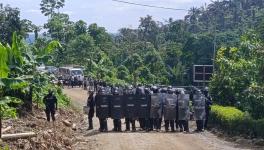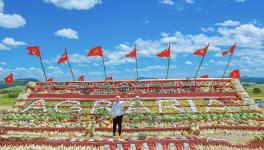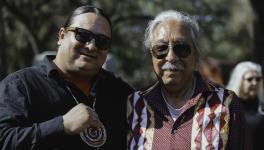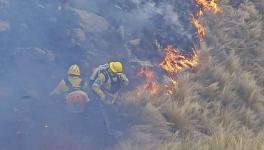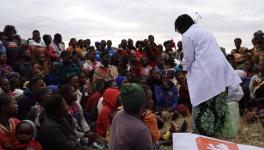Photographer Sebastião Salgado, Friend of MST, Brasil de Fato, Dies
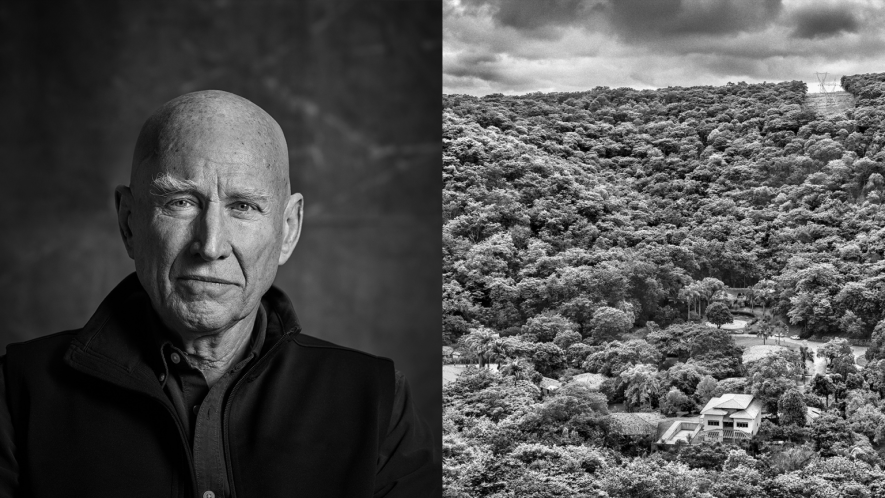
Sebastião Salgado and a photo of his from the Amazon. Photos via Instituto Terra
Renowned Brazilian photographer Sebastião Salgado died this Friday 23, at the age of 81. His death was confirmed on social media by Instituto Terra, founded by him and his wife, Lélia Wanick. “With immense regret, we announce the death of Sebastião Salgado, our founder, teacher, and eternal inspiration,” says the post.
“Sebastião was much more than one of the greatest photographers of our time. Alongside his life partner, Lélia Deluiz Wanick Salgado, he sowed hope where there was devastation and made the idea that environmental restoration is also a profound gesture of love for humanity flourish. His lens revealed the world and its contradictions; his life, the power of transformative action,” the institute wrote in a statement.
Founded in 1998 by Salgado and his partner, Instituto Terra seeks to restore the Doce River basin from deforestation, having planted more than 2 million trees and revitalized 2,500 springs. Salgado used to say that working on the land cured him.
The photographer, who lived in Paris, France, leaves behind two sons, Juliano and Rodrigo, and two grandchildren, Flávio and Nara. According to a close friend who told Folha de S. Paulo, he was facing health complications resulting from malaria contracted in the 1990s.
Born in 1944 in Aimorés, Minas Gerais, Salgado began his career in 1973 and developed photography projects in more than 100 countries. One of his best-known and most important works was a series of black and white images in the book Serra Pelada (1999), a gold mining site in the Amazon in the 1980s.
Friend of the MST and BdF
Throughout his career, Salgado has taken a stand in support of the fight for the dignity of workers. With his renowned camera, he has documented the struggle of the Landless Workers’ Movement (MST) on several occasions, such as the occupation of the Giacomet-Marodin farm in Paraná and the sad episode of the Eldorado de Carajás massacre in Pará.
On several occasions, the photographer expressed his support and solidarity with the movement. “The MST is a movement to occupy this empty space, to give life and meaning to this land. I see it as a necessary element for both ecology and the social side, for the redistribution of income,” he stated at the time of the launch of his book Terra, which portrays the struggle for agrarian reform in Brazil in the 1990s.
In tribute to Salgado, the MST published a note on its social media, highlighting the fruitful partnership. “His departure is an immense loss for art, for human rights and for all who believe in images as an instrument of social transformation,” the text reads. “He was one of the supporters of the construction of the Florestan Fernandes National School, donating photographs and strengthening the political and emancipatory education project that the school represents.”
In 2003, during the World Social Forum in Porto Alegre, Rio Grande do Sul, Sebastião Salgado was one of the godfathers present at the founding ceremony of Brasil de Fato, which filled the Araújo Viana Auditorium. The photographer sat at the table next to Uruguayan writer Eduardo Galeano, Cuban doctor Aleida Guevara, daughter of Che, American linguist Noam Chomsky, Argentine Hebe de Bonafini, leader of the Mothers of the Plaza de Mayo, theologian Leonardo Boff, João Pedro Stedile, leader of the MST, among other names from the national and international left.
Works
Other Americas (1986), his first book, portrayed the poor in Latin America, signaling his determination to show the importance of human dignity and the violation of their rights. The Man in Panic (1986), about the drought in North Africa, resulted from a collaboration with the NGO Doctors Without Borders covering the drought.
In Workers, Salgado portrayed manual labor around the world in records of a long project, which took place between 1986 and 1992. The mass displacement of people was the target of his production between 1993 and 1999, resulting in Êxodos and Retratos de Crianças do Êxodo, published in 2000.
Six other books were published by 2016. The documentary O Sal da Terra (2014), co-directed by Win Wenders and Juliano Salgado, the photographer’s son, sensitively portrays the professional’s journey.
This article was first published by Brasil de Fato in Portuguese.
Courtesy: Peoples Dispatch
Get the latest reports & analysis with people's perspective on Protests, movements & deep analytical videos, discussions of the current affairs in your Telegram app. Subscribe to NewsClick's Telegram channel & get Real-Time updates on stories, as they get published on our website.










